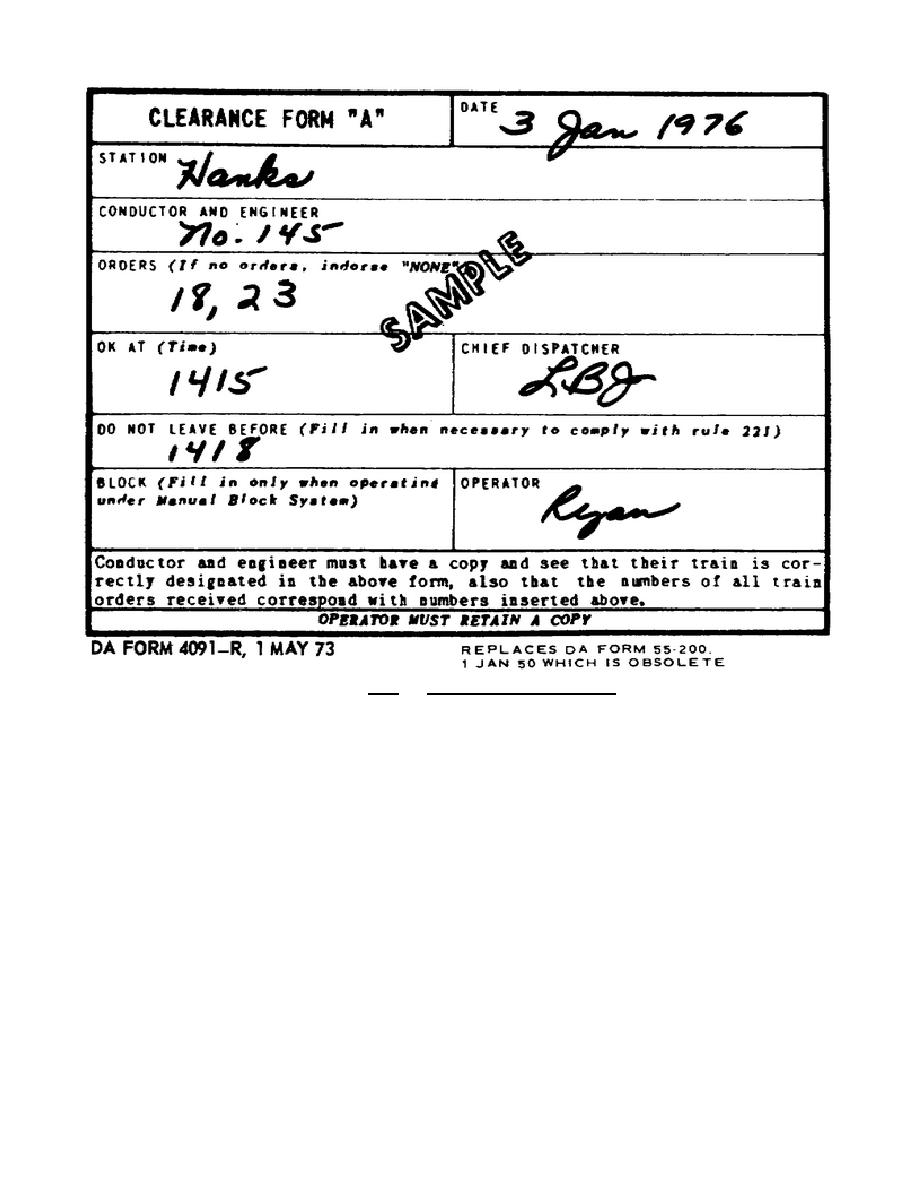
Figure 5.2.
Clearance Form "A."
Even though signals are clear, crews are always on the lookout when
passing any telegraph office. Messages affecting their work along the way
are frequently delivered to the crew "on the fly" by the operator who
attaches communications to message loops. Messages are often informal and
never involve other trains.
They might be used to amend, supplement, or
annul previous instructions--but not train orders--from the dispatcher or
even from yardmasters and station agents along the line where the train is
scheduled to stop.
Often a message can save a crew from stopping at a
station to pick up cars when it develops, after the crew has been instructed
to stop, that the cars will not be ready. Dispatchers often use messages to
ask crews about delays between stations and to warn engineers about
exceeding speed limits. Messages may often be used to advise crew members
about defective cars in their train.
Occasionally, a running conversation between the dispatcher and the crew
is carried on without stopping the train.
The dispatcher's query is
delivered to the crew at the first station, and the
79


 Previous Page
Previous Page
